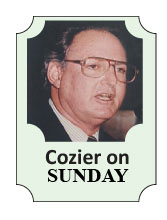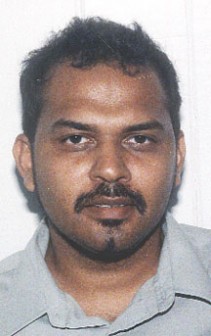For a welcome change, there was plenty to cheer despairing West Indian cricket devotees on three different continents on Thursday.
At the Beausejours Stadium in St. Lucia, a reconstituted team, devoid of its three most experienced players, was rewarded for a spirited performance with victory in the one-off T20 International against Pakistanis, their humiliators in their previous match, the World Cup quarter-final a month ago.
Half a world away, in the unlikely location of Dubai, the Under-19s recovered from defeat in their first of three 50/50 matches against their Australian counterparts to win the next two.
 It might seem an inconsequential result but, apart from a rain-reduced One Day International at Kensington Oval two years ago, it was the first series triumph over Australia by a West Indies team of any description – Test, ODI, Under-19s – since 1995.
It might seem an inconsequential result but, apart from a rain-reduced One Day International at Kensington Oval two years ago, it was the first series triumph over Australia by a West Indies team of any description – Test, ODI, Under-19s – since 1995.
At the same time, even further east, in the Indian city of Chennai, Chris Gayle, the most commanding West Indies batsman of his generation, was reasserting the power and the glory that had been missing in the preceding World Cup with a typically explosive hundred, laced with seven sixes, in his first match in the Indian Premier League (IPL) season.
Unfortunately, all these feats were confined to the field of play. Off it, whatever elation there might have been was, once more, diminished by the current round of bitter internal squabbling that has been the depressing feature of West Indies cricket since the last decade of the 20th century.
This one concerns the omission, and the reasons for it, of the established trio of Gayle, Shivnarine Chanderpaul and Ramnaresh Sarwan from the early matches of the Pakistan tour.
It led to lengthy correspondence between West Indies Cricket Board (WICB) chief executive Ernest Hilaire and Guyana’s Sports Minister Frank Anthony over the status of Chanderpaul and Sarwan, both Guyanese, and acerbic charge and counter-charge between Hilaire and Gayle over the circumstances that prompted the left-handed opener to don the coloured livery of the Chennai Super Kings rather than the usual maroon of the West Indies.

Predictably, the West Indies Players Association (WIPA) stated its objections while, just as predictably, hundreds joined the debate on the omnipresent outlets on the internet.
It was all so familiar.
Yet, even as the latest storm clouds gathered, there were those in high places, expressing optimism about the future.
“Let me assure you, West Indies cricket is at the cusp of a resurgence,” WICB vice-president Dave Cameron proclaimed in Kingston.
He mentioned the establishment of the High Performance Centre at the
University of the West Indies (UWI) Cave Hill campus and the introduction of the Combined Campuses and Colleges (CCC) team in the regional first-class competition as two of the “critical elements”.
Hilaire took up the theme in stating that Chanderpaul, Gayle and Sarwan had been left out in keeping with the stated policy of “moving forward and building a broad pool of international players”.
Whatever the reasoning, it was a daring move to remove, at one fell swoop, such a huge chunk of experience.
The High Performance Centre, the increase in A team tours, the intention of “moving forward and building a broad pool of international players” and whatever else will come to nothing if the deep mistrust between board and players (and it is not only the senior players who are wary of relations with the administration) continues to fester – and, every bit as vital, if nothing is urgently done to raise the quality of the annual first-class tournament.
A succession of those elected to manage West Indies cricket have proved incapable of solving the first problem. If anything, it becomes more and more complex and destructive, even if those who can make the difference don’t appreciate it.
The more straightforward task of fixing the second also appears beyond them. The regional competitions are one step away from the summit of international cricket, the benchmark by which the selectors must judge.
The truth is that Clyde Butts and his panel – and the several before them – find it all but impossible to follow the path of the policy set out by the WICB last October that states that “the basis for selection will be performance at the regional level, through representation of territorial teams.”
That much was again clear from the just ended season.
Not one of the nine West Indian bowlers with over 25 wickets – seven of them spinners – was chosen for the forthcoming matches against Pakistan. Neither has any player from Combined Colleges and Campuses (CCC), top of the points standings after the round-robin stage and a tournament finalist.
Players repeatedly cite sub-standard pitches, poor umpiring and inadequate facilities as the main causes.
As with the West Indies team itself, the WICB has moved to introduce younger, better trained umpires. After years of locating matches at unsatisfactory club and school grounds, it sought to revert this season to the established international venues used.
Yet, instead of the Queen’s Park Oval, Trinidad and Tobago chose Guaracara Park for its opening match against Barbados and the UWI ground in St. Augustine for its semi-final against Jamaica because it apparently felt it suited their purpose.
So it was at the Three Ws Oval where 22 wickets fell on the first day of CCC’s match against Barbados that was done and dusted in two and a half days and 13 on the first against Jamaica in the final that was embarrassingly over in two.
On the other hand, Kensington Oval was so lifeless for Barbados’ match against the England Lions that it yielded 1,009 runs for 20 wickets. For the semi-final, Trinidad and Tobago’s choice of St. Augustine as a venue backfired so spectacularly that Jamaica amassed 664.
Such instances have become increasingly plentiful. It is an area that requires urgent attention and, as the ECB, the controlling body for English cricket, has shown, it is where the WICB can have definite clout.
Back in the Eighties, the ECB established a pitch inspection panel, comprised mainly of former players. Its role is to check on pitches that lead to bad cricket (too favourable to either batsmen or bowlers) or are deemed to be deliberately doctored to aid the home team. It recommends solutions and has the power to deduct points in the latter case.
The WICB needs to follow suit, especially in light of the 2011 season.
There were 30 totals under 200 in the 31 matches, five of them under 100. CCC, which topped the points table at the round-robin stage on the way to the final, had only one batsman averaging above 30 (Kyle Corbin, 33.70) in their nine matches. His 108 against the Leeward Islands was their solitary hundred.
The highest average for Guyana, a land once noted as a batting production line for the West Indies, was 32.3. None of their present crop managed a hundred.
The gap in batting technique between the invited England ‘A’ team, the Lions, and their regional opponents was glaring. They topped 500 twice and were never dismissed for under 300, accounted for eight of the 29 hundreds all told and had two men averaging over 60, one over 50 and five over 50.
The explanation was simple. They have the advantage of true pitches that test the skill of batsmen and bowlers equally, as those in the Caribbean once did.
Returning to such standards now needs to be near the top of the WICB’s to do list.









